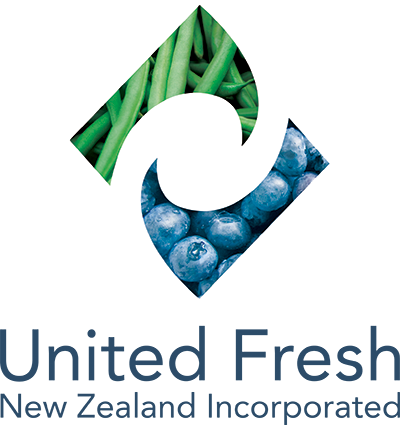International Trend Report 2024
31st May 2024
International Trend Report 2024
Healthy ageing, environmental sustainability and economic austerity are all key drivers of current societal trends. A diet rich in fruit and vegetables can help address many of these challenges. Discover what the latest predictions are and how you can help provide the solutions that consumers are looking for.
Showing some love for less-than-perfect produce
Searching for blemish-free fruit and vegetables is becoming a thing of the past. Consumers are now embracing imperfection and learning to love ‘ugly’ fresh produce as a way of reducing food waste and supporting global sustainability efforts.
Overseas supermarkets have sold misshapen produce at discounted prices for years and now New Zealanders are getting on board. Woolworth’s The Odd Bunch brand is proving popular, and home delivery subscription services and social enterprises are popping up across Aotearoa such as misfitgarden, wonkybox and perfectlyimperfect to sell produce that’s too big, too small or cosmetically-challenged in some way.
An estimated one third of the world’s food never gets eaten (about 1.3 billion tonnes a year). So the fact that consumers are more willing to overlook appearances and focus on the delicious taste and health benefits of fresh produce instead, is a trend we should all applaud. It’s good for our health, our growers, and our planet.

Move over mince, here comes the mighty mushroom
If you’ve cooked a Chelsea Winter plant-based recipe lately, watched Fantastic Fungi on Netflix, or are following the latest series of MasterChef Australia on TVNZ, you’ll have noticed that mushrooms are having a moment. From standard white buttons to more exotic varieties like portobello, shiitake or oyster mushrooms, this ingredient is popping up in recipes and on restaurant menus everywhere. Their umami-flavour is now regularly used as a meat substitute, particularly in place of mince.
The best-selling US vegan publication, VegNews, highlighted mushrooms as one of its biggest food predictions for 2024, saying “they’re not only packed with nutrition, but they are versatile, tasty, and they have a meaty texture when cooked without having to be excessively processed. For that reason, brands are going to be hot on using mushrooms in every which way throughout 2024.” Chelsea’s ‘beast mode lasagna’ is an epic example of just how deceptive and delicious they can be.
The New Zealand Commercial Mushroom Growers Federation Secretary, Daniel Van Shie, reports within the mushroom category portobello mushrooms and exotics like oyster and shiitake are also becoming more popular here. He is encouraging consumers to base a weekly meatless meal around mushrooms, as their incredible texture and enormous nutritional benefits make the perfect meat substitute.

The less processing, the better
Growing awareness of the health risks associated with highly or ultra-processed food is driving a shift towards eating less processed, nutritionally-rich food. This presents an excellent opportunity for New Zealand’s fresh produce industry to capitalise on this trend by championing the substantial health benefits that fresh fruit and vegetables offer.
In their 2024 food and drink report, global market intelligence agency Mintel says scrutiny of processing use in the food and drink industry is intensifying and will inspire consumers to look more closely at ingredients, nutrition and production this year. “Expect to see a growing interest in less processed food and drink made with upcycled ingredients rich in vitamins, minerals, fibre, protein and other nutrients,” the report says. Ongoing marketing campaigns by 5+ A Day that highlight how nutritionally important it is to eat fresh fruit and vegetables are already producing results. These ‘whole food’ messages are well-received by consumers, chefs and manufacturers looking for healthy ingredients to add to their products.
Fakeaways are here to stay
Creating fake ‘takeaway’ food at home has been a definite trend in recent years, but one that’s gaining new momentum in 2024 as the cost of living crisis continues to bite. When one piece of fish and a single scoop of chips costs $10-$15, it’s no wonder more people are choosing to buy frozen fish fillets and make their own fries by oven roasting or air frying potatoes instead.
Turkish wraps, toasted pita pockets and subway-style rolls can easily be made at home using fresh lettuce or spinach, tomatoes, mushrooms, sautéed onions, capsicum and whatever other ingredients take your fancy. People can recreate Taco Bell’s veggie bowls and Wendy’s loaded baked potatoes for a fraction of the price. Social media is full of fakeaway tips and hacks.
New Zealand supermarkets say ‘fakeaways’ remain extremely popular in 2024 as consumers try to cope with inflation and high interest rates. January’s edition of Supermarket News quoted Mark Roper, Head of Sales and Marketing at Life Health Foods, saying many Kiwis now eat out less to make ends meet, offering more opportunities for eat-at-home solutions. “The ‘Fakeaway’ trend (make your favourite takeaway food at home) is set to increase with products that provide genuine, tasty solutions and are easy to prepare and reward.”
Gut-friendly foods are firmly in the spotlight
Awareness of gut-health and what role nutrition plays in reducing our risk of disease is changing our eating and grocery shopping habits. The mysteries of the gut microbiome continue to be uncovered and it’s now well-known that fermented foods like yoghurt, kefir, kimchi and other fermented vegetables can introduce ‘good’ bacteria that support our digestive system. Adding fibre-rich fruit like apples, bananas and berries and leafy greens into our daily diet can enhance the diversity of our gut microbiome and create a symbiotic relationship with fermented foods to optimise our gut health.

References:
- https://lovefoodhatewaste.co.nz/introducing-the-odd-bunch
- https://www.theworldcounts.com/challenges/people-and-poverty/hunger-and-obesity/food-waste-statistics
- https://www.wonkybox.nz/why-wonky
- https://vegnews.com/2024/1/food-trends-2024
- https://www.mushroomcouncil.org/wp-content/uploads/2023/10/Ten-Year-Fresh-Mushroom-Trends.pdf
- https://www.mintel.com/press-centre/mintel-announces-global-food-and-drink-trends-for-2024/
- https://supermarketnews.co.nz/news/supermarkets-see-rise-in-new-fakeaway-trend
- https://www.tiktok.com/tag/fakeaways
- https://9now.nine.com.au/today/fakeaway-trend-saving-families-serious-money/3fa332a3-a72a-4a0e-a864-b2d509cbe3e8
- https://www.beginhealth.com/blogs/learn
- https://www.otago.ac.nz/news/newsroom/early-onset-bowel-cancer-on-the-rise
